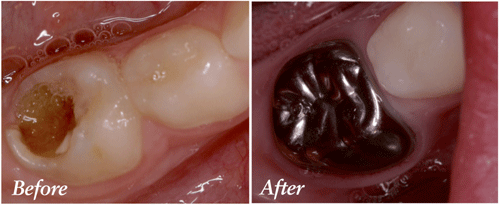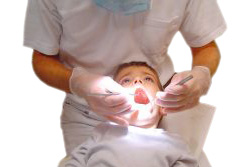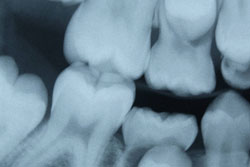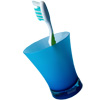- What are stainless steel crowns?
- Why are stainless steel crowns used?
- When are stainless steel crowns used?
- Alternatives to stainless steel crowns
- How a stainless steel crown is used
- After getting a stainless steel crown
- Benefits
- Limitations
What are stainless steel crowns?
A stainless steel crown (SSC) is a preformed metal crown used for the restoration of severely decayed milk teeth.
SSCs are generally used on posterior (back) milk teeth but can also be used on front milk teeth and permanent molars. However, they are not preferred on the front teeth because of the silver appearance of the crown and because they may cause irritation to the gums and tooth supporting structures in permanent teeth.

Why are stainless steel crowns used?
From the time they were invented in 1950 by Dr William Humphrey, SSCs have been used extensively to restore damaged milk teeth. This is because:
- Since the SSC are preformed crowns, they resemble the crown of the tooth, and so when placed on the tooth, they can perform the same functions that a tooth can;
- When the time comes for the milk tooth to fall off to give way for the permanent tooth, the SSC falls off easily without causing any damage to the gums; and
- The life expectancy of these crowns is better than any other material used and may never have to be replaced until the tooth falls out.
When are stainless steel crowns used?

- When the tooth has been severely damaged due to dental caries and may or may not have to undergo pulp treatment;
- When the crown of the tooth has been fractured or broken due to any reason;
- Some teeth are abnormal from birth or due to other diseases causing the need for a crown;
- Children who have a high rate of dental caries; and
- When no other restoration material can be used and SSCs become an obvious choice e.g. for children who are physically or mentally disabled.
Alternatives to stainless steel crowns
Other than SSC, other materials can also be used in its place depending on the extent of damage and the preference of the dentist including:
- Silver amalgam; and
- Composite (white filling material).
How a stainless steel crown is used

If the tooth is severely damaged due to dental decay and the pulp also needs to be treated (pulpotomy), no additional local anaesthesia is required for the crown placement since anaesthesia would have been administered already during pulp treatment. However, if the procedure involves only placing the crown, then some local anaesthesia may be injected into the gums so there is no discomfort.
A soft latex sheet called a rubber dam is inserted in the mouth to isolate the tooth that is being treated. This also helps in keeping the working area free of moisture thus increasing visibility of the dentist and prevents inhalation of any debris.
The biting surface is first reduced by about 1.5mm following the contours of the crown of the tooth. A wooden wedge is placed between the tooth being treated and the adjacent tooth to open the contact area so that the surface can be reduced without damaging the adjacent tooth.
Dentists may use different methods to do the tooth cutting depending on their preference.
The right crown is then selected by the dentist and its margins contoured to give the shape of the tooth. At this point, the crown should snugly sit on the tooth. The crown and the tooth are then washed and dried separately.
The desired cement is then mixed and put on the insides of the crown which is then fitted on the tooth. The rubber dam is removed and the child is asked to bite hard on the crown so that all the excess cement is removed. This is cleaned off and the tooth is finally flossed to finish the cleaning process.
After getting a stainless steel crown
Due to the effects of the anaesthesia and the feeling of numbness, make sure the child does not bite their tongue, cheek or lip.
- Once the numbness has worn off, some discomfort may be experienced. The child can be given mild painkillers as directed by the dentist.
- Avoid sticky food for 3-4 days after insertion of the crown to allow for the cement under it to harden.
- To avoid gum irritation, brushing and flossing should be done. Although the area where the crown has been inserted may bleed or swell, regular brushing and flossing will help heal the gums and keep it healthy.
- A warm salt water rinse 2-3 times a day can be included in the brushing and flossing regime to help reduce the soreness around the gums in case of not being able to maintain good oral hygiene.
- Stainless steel crowns are shiny when they are placed in the mouth and should thus be maintained in that way. If a white line is seen at the bottom of the crown or the crown appears cloudy, then plaque is building up and brushing needs to be improved promptly.
- Since there is a foreign body in the mouth, slight pain when biting, slurred speech and chewing on the inside of the cheeks are common occurrences. The child should be given about 2 weeks adjustment period. Within that period mild painkillers can be given to help ease the discomfort.
- No follow-up with the dentist is necessary unless there is severe gum irritation or if the crown falls off.
Benefits
- The success rate of SSC is almost 96% when compared to other restorative materials.
- It adapts well to the tooth thus causing no leakages.
- There are easy to place on the tooth since they come preformed.
- They are easy to manipulate for the dentist.
- They are inexpensive and thus very cost effective.
- In spite of significant loss of crown structure on the tooth, the tooth can still be restored.
Limitations
- The main limitation is the appearance of the silver metallic crown in the mouth.
- The biting surface may wear out with time.
- If the crown has not been adapted well on the tooth, gum irritation can occur.
More information
 |
For more information on dental health in children, including teething, hygiene and nutrition for good teeth, as well as the importance of dental check-ups, see Dental Health in Children. |
References
- Welbury R, Duggal M, Hosey M-T. Paediatric Dentistry (3rd edition). New York: Oxford Medical Publishers; 2005. [Book]
- Readman P. In: The Newsletter of the Australian and New Zealand Society of Paediatric Dentistry: Synopses. Issue 20, 1999 [Full Text]
- Croll TP, Riesenberger RE. Primary molar stainless steel crown restoration. Quintessence Int. 1986;4:221-6. [Abstract]
- McDonald RE, Avery DR. Dentistry for the child and adolescent (7th edition). St Louis; 2004. [Book]
- Bellet LJ, Sanclemente C, Casanovas M. Crowns in pediatric dentistry: review. Dentum. 2006;6(3):111-17. [Full Text]
- Fieldman BS, Cohen MM. A simple efficient method for utilizing stainless steel crown. J. Dent. Child. 1979;6:34-7. [Abstract]
- Allen K. Restoration of extensively carious primary molar. ADJ. 1:8-12. [Abstract]
All content and media on the HealthEngine Blog is created and published online for informational purposes only. It is not intended to be a substitute for professional medical advice and should not be relied on as health or personal advice. Always seek the guidance of your doctor or other qualified health professional with any questions you may have regarding your health or a medical condition. Never disregard the advice of a medical professional, or delay in seeking it because of something you have read on this Website. If you think you may have a medical emergency, call your doctor, go to the nearest hospital emergency department, or call the emergency services immediately.

 Due to the effects of the anaesthesia and the feeling of numbness, make sure the child does not bite their tongue, cheek or lip.
Due to the effects of the anaesthesia and the feeling of numbness, make sure the child does not bite their tongue, cheek or lip.





